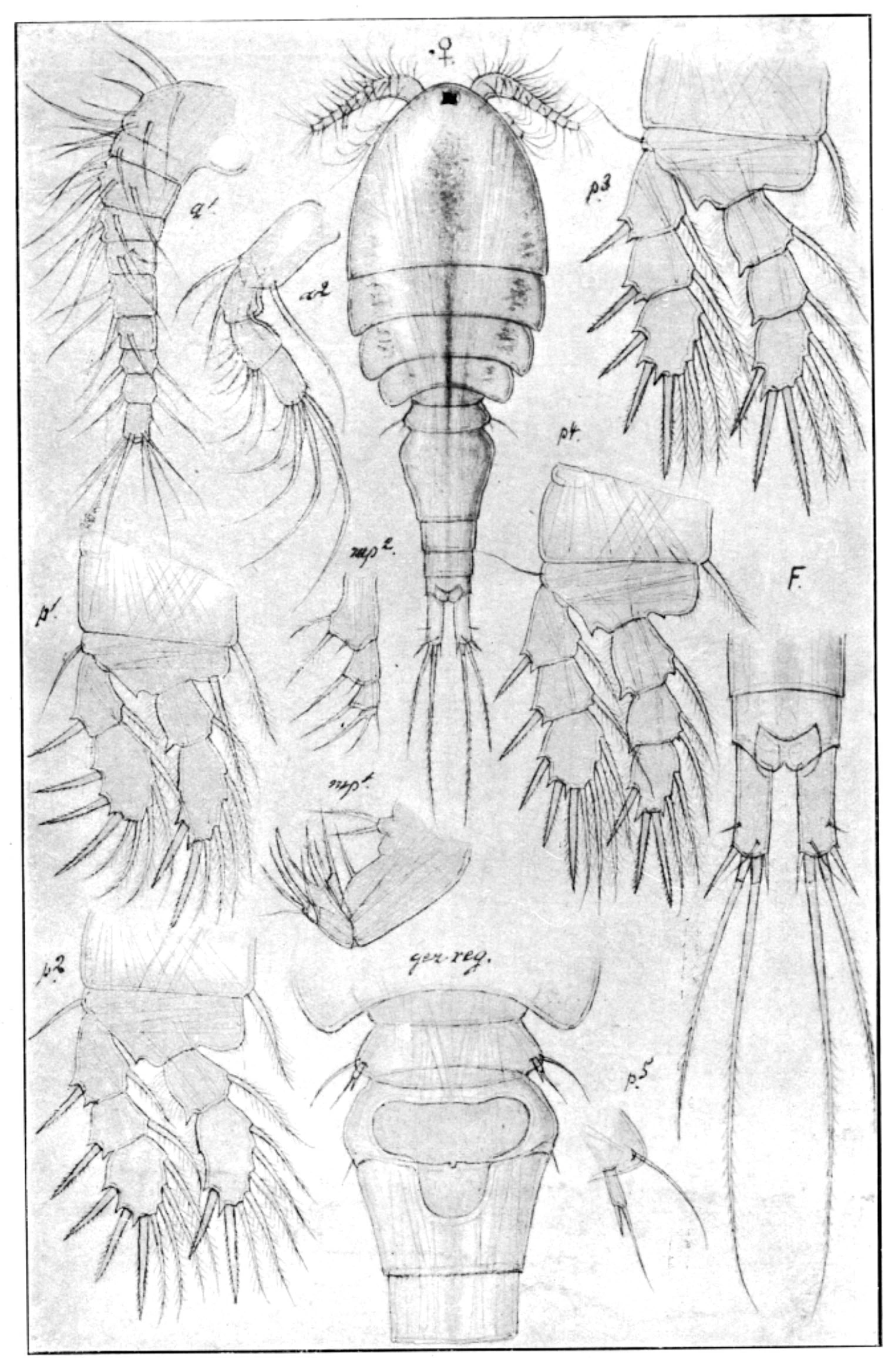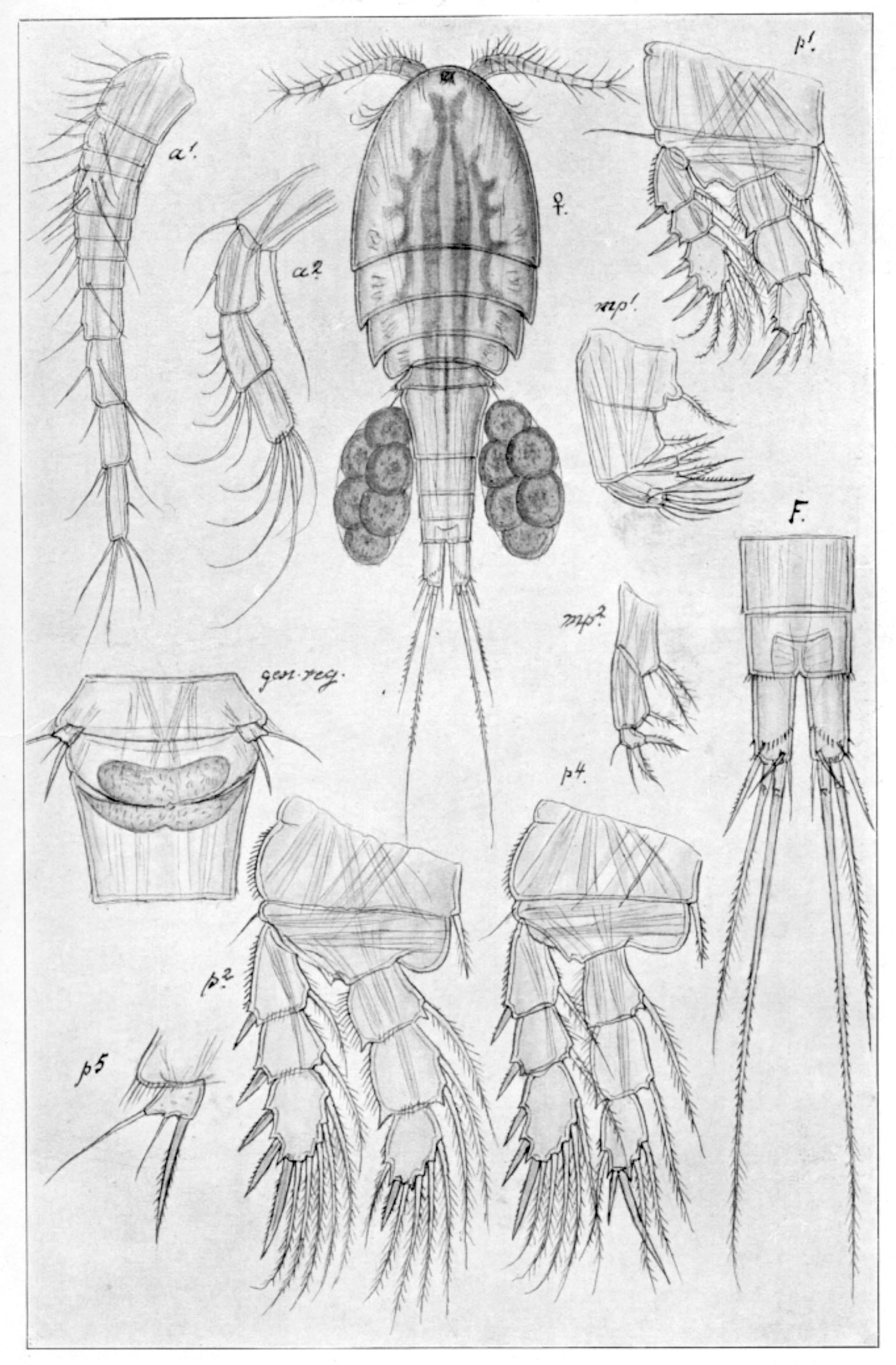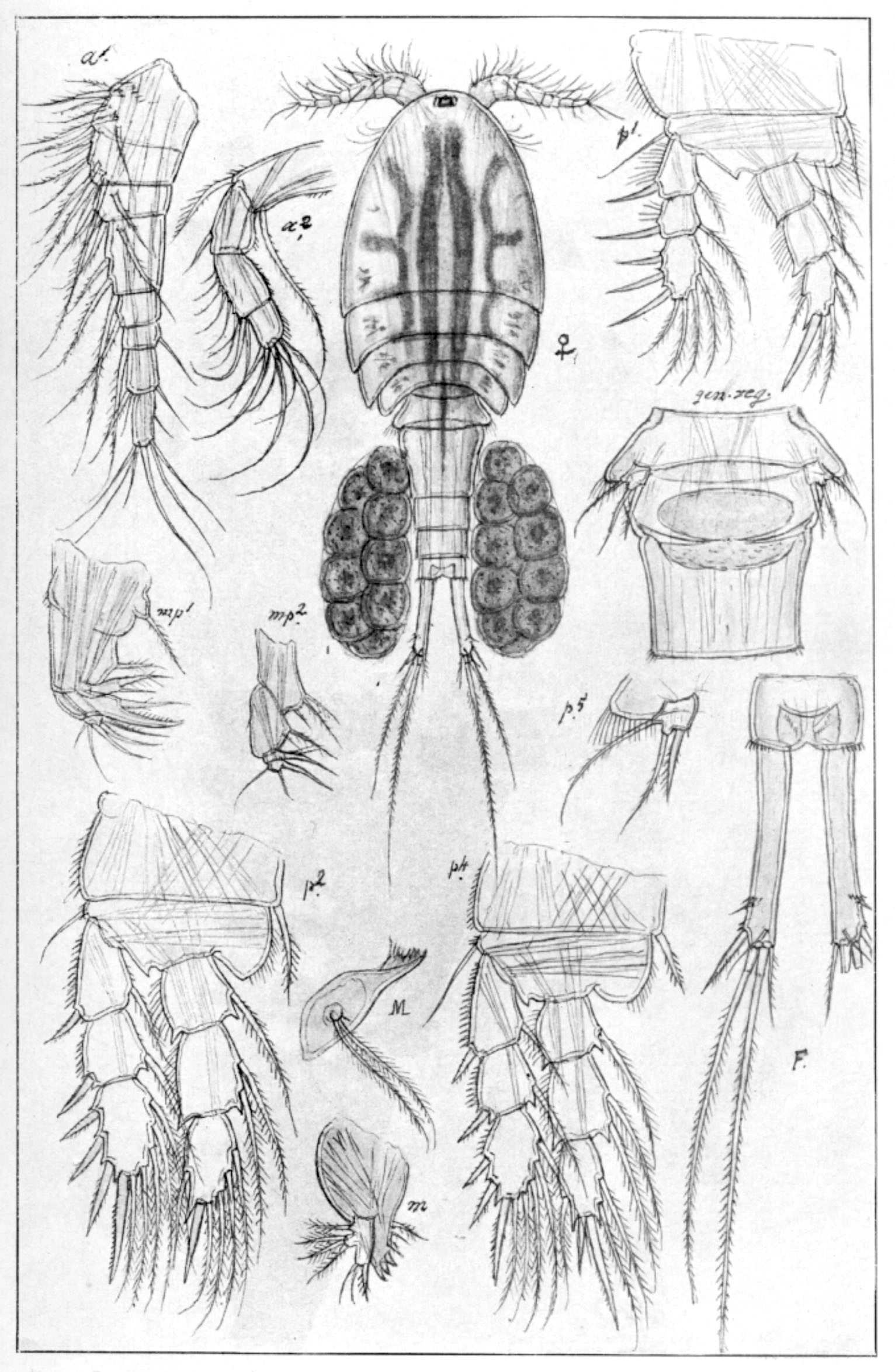Diacyclops abyssicola
Diayclops abyssicola is a very distinct and easily recognisable species by the structure of its legs, protruding from the body. It is one out of few littoral species living on the bottom of lakes.
Key characteristics
Diacyclops abyssicola (female)
Diayclops abyssicola is a very distinct and easily recognisable species, differing from the other cyclopoids by its conspicuously external appearance. Its body is short and stout; this also applies to the antennas which consists of only 10 segments. The habitué may resemble species in the genus Paracyclops spp., but the structure of its legs, protruding from the body, tells us that this is a genuine species. Its colour is whitish, with a touch of rose or violet.
Female: Length 0.7–0.8 mm
Male: Length unknown
Ecology and distribution
G.O. Sars found this species only in muddy bottoms in Lake Mjøsa at about 10 m depth. Since Sars it has been found in the littoral of eight water bodies southeast of Oslo. These are situated <300 m a.s.l., and varying in size. pH varies between 6.2 and 7.6., while the level of electrolytes is high (5–84 mS/m). According to Lilljeborg, D. abyssicola has been found down to about 50 m depth.
| Vitenskapelig navn | < 4,5 | 4,5 - 4,9 | 5,0 - 5,4 | 5,5 - 5,9 | 6,0 - 6,4 | 6,5 - 7,0 | 7,0 - 7,4 | > 7,5 |
|---|---|---|---|---|---|---|---|---|
| 0 | 0 | 0 | 0 | 0,9 | 0,5 | 0,4 | 0,8 |
| Vitenskapelig navn | < 1,0 | 1,0 - 1,4 | 1,5 - 1,9 | 2,0 - 2,9 | 3,0 - 3,9 | 4,0 - 4,9 | 5,0 - 6,9 | 7,0 - 9,9 | > 10,0 |
|---|---|---|---|---|---|---|---|---|---|
| 0 | 0 | 0 | 0 | 0 | 0 | 3,5 | 0,9 | 0,4 |
| Vitenskapelig navn | < 0,01 | 0,01 - 0,09 | 0,1 - 0,9 | 1,0 - 9,9 | 10,0 - 99 | 100 - 999 | > 1000 |
|---|---|---|---|---|---|---|---|
| 0 | 0 | 0 | 0,2 | 0 | 1,1 | 6,5 |
| Vitenskapelig navn | < 100 | 100-299 | 300-499 | 500-699 | 700-999 | >1000 |
|---|---|---|---|---|---|---|
| 0,5 | 0,6 | 0 | 0 | 0 | 0 |
Look alikes
Paracyclops spp.



